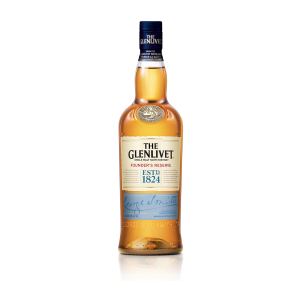It may come as a surprise that first time it happens to you, but it is natural. Some whisky can cloud up just as absinthe, Pernod or ouzo do.
It’s perfectly normal, if a little disconcerting, so here we try to explain the science behind it.
What is chill filtration?
Chill filtration involves chilling matured whisky to between -10⁰C and 4⁰C centigrade, then filtering by adsorption. The fatty acids and proteins stick together and can then be more easily removed. Not every whisky is chill-filtered and not every distillery does chill-filtration the same way, but essentially the lower the temperature, the more effective the process.
Whisky is a mixture of ethanol, water and ‘stuff’ that contributes to the colour, aroma, and flavour. That 1% contains sciency-sounding things like congeners, tannins, esters, ketones, aldehydes, and phenols. Everything organic contains lipids, and some of these fatty acids from the barley survive the gristing, steeping, fermentation, distillation and maturation, to surface in the distillate (Almost literally when chill-filtered).
If you add ice to your whisky, which lowers both its temperature and its alcohol by volume, whiskies which have not been chill-filtered may lose their bright golden sheen and go cloudy. This does not mean that they are in any way inferior or that they have gone off. It simply means that they contain lipids that have not been removed through a process of chill-filtration.
Like most fats, these lipids have a large head that loves water (hydrophilic) and a long tail that hates it (hydrophobic). It is these long carbon chains that stop oil from mixing with water – think vinaigrette, or a tanker spill in the ocean. On the other hand ethanol has a short carbon chain tail that not only mixes easily with water but also with the long tails of lipids.
However, this is only the case if there is enough ethanol to go round. If there isn’t, the oil and water will separate, For whisky this happens around 46% ABV, or less at lower than room temperature.
As the lipids stop mixing with the ethanol and water they group into spherical clumps – with all the water-hating tails pointing inwards – called micelles. These are miniscule, but when there are millions of them refracting light in a glass the whisky turns cloudy.
Those of you still with me may recall this from your Chemistry 101 as a colloid – a suspension of solid particles in a liquid.
Alternatively, chill-filtration can remove these solid particles and the whisky will glow beautifully in your glass forever-more.
So the question that naturally pops up at this point is, ‘Are these things not essential to the Scotch?’
Many would say yes, that the compounds that are removed by chill-filtration contribute to the complexity of the flavour and feel and aroma.
A good example would be ethyl acetate, an ester created when acetic acid reacts to alcohol, that contributes to aroma.
(But not if it has been removed by chill-filtration.)
Others would say no, there is no impact and in the main, this is the view the distilleries take.
My personal view is that while I love a good Hefeweissen wheat beer, and have always preferred lumpy scrumpy straight from the orchard to shiny sweet (hard) cider, there are times when only an ice-cold lager will do.
As with all things whisky, it’s entirely up to you.
There are hundreds of chill-filtered and non chill-filtered whiskies to choose from. Try them. See what you like.
If you find you prefer non chill-filtered, there are many excellent whiskies, to choose from.
I’d recommend sampling some Springbank as a starter for 10.
Check this out for a professional explanation.



